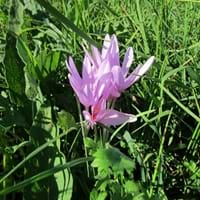Life Span
Perennial
Perennial
Type
Broadleaf Evergreen
Bulb or Corm or Tuber
Origin
Australia
Europe, Turkey, Central Asia, Western Asia
Types
Bigleaf hydrangea, Hortensia, Smooth hydrangea, Oakleaf hydrangea, Annabelle
Colchicum cupanii, Colchicum alpinum
Number of Varieties
Not Available
Habitat
Forest edges, Hillside, Woods
Fields, meadows, Rocky areas, Shaded sites, Woodlands
USDA Hardiness Zone
9-15
Not Available
AHS Heat Zone
Not Available
Not Available
Habit
Spreading
Clump-Forming
Flower Color
Red
White, Yellow, Purple, Violet
Flower Color Modifier
Bicolor
Bicolor
Fruit Color
Sandy Brown
Not Available
Leaf Color in Spring
Green, Sea Green, Rose, Bronze
Green
Leaf Color in Summer
Green, Light Green
Light Green
Leaf Color in Fall
Green, Light Green, Gray Green
Several shades of Green
Leaf Color in Winter
Green, Gray Green
Light Green
Leaf Shape
Oblovate
Long Linear
Plant Season
Spring, Summer, Fall, Winter
Spring, Fall, Winter
Sunlight
Full Sun, Partial Sun
Full Sun, Partial Sun
Growth Rate
Medium
Medium
Type of Soil
Loam, Sand
Loam
The pH of Soil
Acidic, Neutral
Acidic, Neutral
Soil Drainage
Well drained
Well drained
Bloom Time
Indeterminate
Early Spring, Late Summer, Early Fall, Fall, Late Fall, Winter, Late Winter
Tolerances
Wet Site, Pollution, Drought, Salt, Soil Compaction
Drought
Where to Plant?
Container, Ground
Container, Ground, Pot
How to Plant?
Seedlings, Stem Planting
Divison, Seedlings
Plant Maintenance
Medium
Low
Watering Requirements
Not Available
Do Not over Water, Medium, Needs less watering, Never Over-water, Requires regular watering, Water less during winter
In Summer
Drought Tolerant
Ample Water
In Spring
Moderate
Less Watering
In Winter
Average Water
Less Watering
Soil pH
Acidic, Neutral
Acidic, Neutral
Soil Type
Loam, Sand
Loam
Soil Drainage Capacity
Well drained
Well drained
Sun Exposure
Full Sun, Partial Sun
Full Sun, Partial Sun
Pruning
Remove damaged leaves, Remove dead branches, Remove dead leaves
Remove damaged leaves, Remove dead leaves, Remove dead or diseased plant parts, Remove shoots
Fertilizers
All-Purpose Liquid Fertilizer
fertilize in growing season, Less fertilizing
Pests and Diseases
Red blotch
Not Available
Plant Tolerance
Wet Site, Pollution, Drought, Salt, Soil Compaction
Drought
Flower Petal Number
Single
Single, Double
Foliage Texture
Fine
Coarse
Foliage Sheen
Matte
Not Available
Attracts
Bees, Flies
Bees, Butterflies
Allergy
Chest tightness, Diarrhea, Dizziness, Nausea, Vomiting
Kidney Disease, Low blood pressure, Stomach pain, Toxic, Vomiting
Aesthetic Uses
Not Available
Landscape Designing
Beauty Benefits
Not Available
No Beauty Benefits
Edible Uses
Not Available
Yes
Environmental Uses
Air purification
Air purification, No fertilizer, pesticides, or herbicides needed, Prevent Soil Erosion
Medicinal Uses
Fever, Kidney problems, Urinary tract problems
anti-cancer, anti-inflammatory, Diarrhea, Diuretic, Rheumatism
Part of Plant Used
Flowers, Root
Flowers, Leaves
Other Uses
Not Available
Employed in herbal medicine, Showy Purposes, Used as Ornamental plant, Used for its medicinal properties
Used As Indoor Plant
Not Available
Yes
Used As Outdoor Plant
Yes
Yes
Garden Design
Container, Feature Plant, Hedges, Mixed Border, Screening, Wind Break, Topiary, Bonsai, Espalier, Tropical
Alpine, Container, Cutflower, Foundation, Lawns and Turf, Mixed Border, Rock Garden / Wall, Wildflower
Botanical Name
CALLISTEMON citrinus
COLCHICUM
Common Name
Crimson Bottlebrush
Colchicum
In Hindi
Hydrangea
colchicum
In German
Hortensie
colchicum
In French
Hortensia
colchique
In Spanish
Hortensia
Colchicum
In Greek
υδραγεία
Colchicum
In Portuguese
Hortênsia
Colchicum
In Polish
Hortensja
Colchicum
In Latin
Hibiscus
Colchicum
Phylum
Not Available
Magnoliophyta
Class
Not Available
Liliopsida
Order
Not Available
Liliales
Family
Myrtaceae
Liliaceae
Genus
Not Available
Colchicum
Clade
Not Available
Angiosperms, Monocots
Tribe
Not Available
Not Available
Subfamily
Not Available
Wurmbaeiodeae
Number of Species
Not Available
Properties of Crimson Bottlebrush and Colchicum
Wondering what are the properties of Crimson Bottlebrush and Colchicum? We provide you with everything About Crimson Bottlebrush and Colchicum. Crimson Bottlebrush doesn't have thorns and Colchicum doesn't have thorns. Also Crimson Bottlebrush does not have fragrant flowers. Crimson Bottlebrush has allergic reactions like Chest tightness, Diarrhea, Dizziness, Nausea and Vomiting and Colchicum has allergic reactions like Chest tightness, Diarrhea, Dizziness, Nausea and Vomiting. Compare all the properties and characteristics of these two plants. Find out which of these plant can be used as indoor plant. If you are interested to decorate your house and garden, find out aesthetic uses, compare them and select the plant which will beautify your surrounding. Along with beautification, try comparing medicinal and edible uses of Crimson Bottlebrush and Colchicum and you can choose the plant having best and most benefits.
Season and Care of Crimson Bottlebrush and Colchicum
Season and care of Crimson Bottlebrush and Colchicum is important to know. While considering everything about Crimson Bottlebrush and Colchicum Care, growing season is an essential factor. Crimson Bottlebrush season is Spring, Summer, Fall and Winter and Colchicum season is Spring, Summer, Fall and Winter. The type of soil for Crimson Bottlebrush is Loam, Sand and for Colchicum is Loam while the PH of soil for Crimson Bottlebrush is Acidic, Neutral and for Colchicum is Acidic, Neutral.
Crimson Bottlebrush and Colchicum Physical Information
Crimson Bottlebrush and Colchicum physical information is very important for comparison. Crimson Bottlebrush height is 530.00 cm and width 470.00 cm whereas Colchicum height is 7.60 cm and width 7.60 cm. The color specification of Crimson Bottlebrush and Colchicum are as follows:
Crimson Bottlebrush flower color: Red
Crimson Bottlebrush leaf color: Green, Sea Green, Rose and Bronze
Colchicum flower color: White, Yellow, Purple and Violet
- Colchicum leaf color: Green
Care of Crimson Bottlebrush and Colchicum
Care of Crimson Bottlebrush and Colchicum include pruning, fertilizers, watering etc. Crimson Bottlebrush pruning is done Remove damaged leaves, Remove dead branches and Remove dead leaves and Colchicum pruning is done Remove damaged leaves, Remove dead leaves, Remove dead or diseased plant parts and Remove shoots. In summer Crimson Bottlebrush needs Drought Tolerant and in winter, it needs Average Water. Whereas, in summer Colchicum needs Ample Water and in winter, it needs Less Watering.

